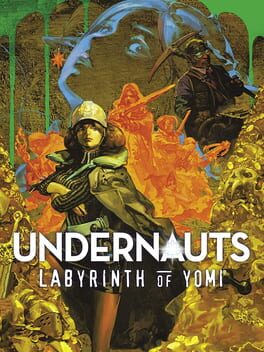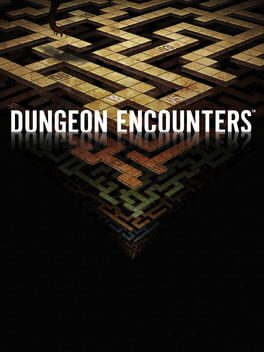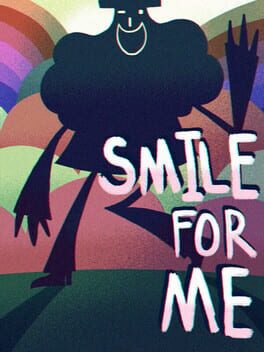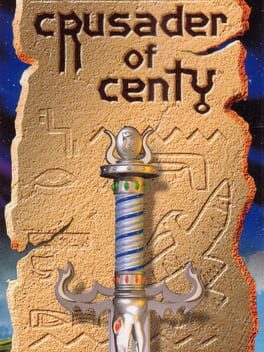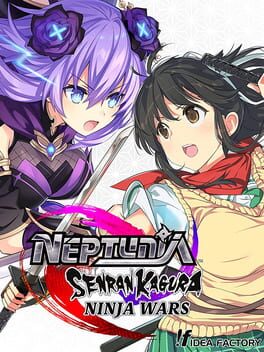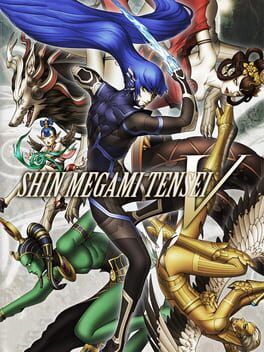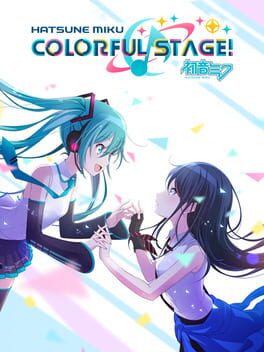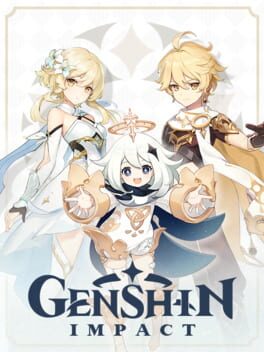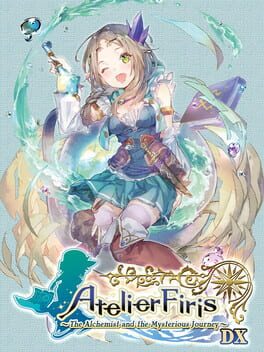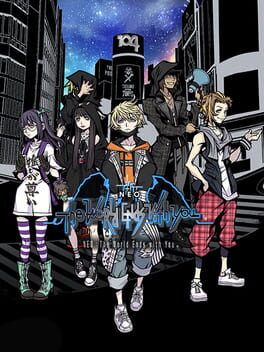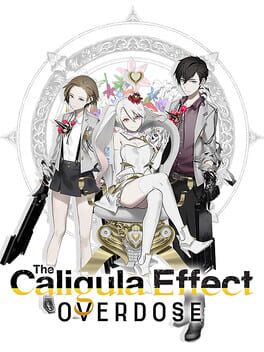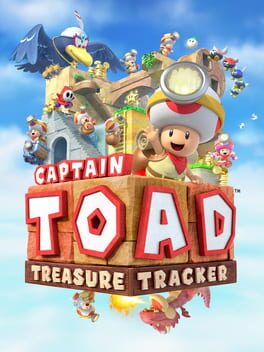Dokkanojo
I was the navigator for my wife as she played through Undernauts, a role that had me digging around the internet until I finally found a Japanese guide site that could help us with the various stopping blocks we knew we’d come across from our time with other Experience games. At some point in our playthrough, I wandered onto the page with frequently asked questions, hoping to gleam some small tips that might help us. At the top of the page, though, it was impossible to ignore a certain question, nestled right under an explanation of what type of game Undernauts is. It asked, bluntly, “Is it the usual Experience game?”
Just as bluntly, the answer given was, “You wouldn’t be mistaken in thinking so.”
It’s a harsh assessment, but a fair one, and one that I’m sure isn’t given with any sense of malice, considering I doubt anyone would want to make such an extensive resource for a game they didn’t have at least some affection for. As for myself, I can’t find much to disagree with in the guide maker’s sentiment, at least as far as the game’s mechanics go. I don’t think there’s much new Undernauts does at all to expand on Experience’s prior works outside of some quality of life changes, and I truthfully found its dungeon aesthetics to be a bit repetitive due to later areas reusing assets from earlier ones. As someone who has played a fair few of their games, it really was nothing new, almost bordering on underwhelming.
Ultimately, though, I can’t say I dislike Undernauts. In fact, I really enjoyed it, because all of the gaps left by its weaker aspects are nicely filled in by its amazing vibe. I love the concept of corporate slaves in the Japanese bubble economy diving into a fantasy hell-mine to get some inexplicable super-resource managed by an obviously evil company looking to monopolize its use. It’s a great premise for the genre, and it’s reinforced by grungy, grimy art that crosses ‘80s aesthetics with tabletop RPG rulebook art in a way that’s totally unique and memorable.
To me, Undernauts’ true strength is in being a weird melting pot of corporate nihilism, ‘80s clothing, isekai, divinity, forbidden magic, and hobbled-together technology that somehow blends all those elements together cohesively into a fairly compelling narrative and game, despite a few fumbles here and there.
Just as bluntly, the answer given was, “You wouldn’t be mistaken in thinking so.”
It’s a harsh assessment, but a fair one, and one that I’m sure isn’t given with any sense of malice, considering I doubt anyone would want to make such an extensive resource for a game they didn’t have at least some affection for. As for myself, I can’t find much to disagree with in the guide maker’s sentiment, at least as far as the game’s mechanics go. I don’t think there’s much new Undernauts does at all to expand on Experience’s prior works outside of some quality of life changes, and I truthfully found its dungeon aesthetics to be a bit repetitive due to later areas reusing assets from earlier ones. As someone who has played a fair few of their games, it really was nothing new, almost bordering on underwhelming.
Ultimately, though, I can’t say I dislike Undernauts. In fact, I really enjoyed it, because all of the gaps left by its weaker aspects are nicely filled in by its amazing vibe. I love the concept of corporate slaves in the Japanese bubble economy diving into a fantasy hell-mine to get some inexplicable super-resource managed by an obviously evil company looking to monopolize its use. It’s a great premise for the genre, and it’s reinforced by grungy, grimy art that crosses ‘80s aesthetics with tabletop RPG rulebook art in a way that’s totally unique and memorable.
To me, Undernauts’ true strength is in being a weird melting pot of corporate nihilism, ‘80s clothing, isekai, divinity, forbidden magic, and hobbled-together technology that somehow blends all those elements together cohesively into a fairly compelling narrative and game, despite a few fumbles here and there.
2021
Dungeon Encounters reminds me of the early days of the internet, before the DMCA, when copyright status was merely a suggestion. With no guarantee of an official, licensed product, amateur programmers created digital versions of their favorite analog games (ie. Magic the Gathering), making applications that were difficult to use, often unstable, and immeasurably magical. That’s what Dungeon Encounters is to me: a Windows 95 application to play Dungeon & Dragons.
There’s a lot that’s good to say about the game. Its mechanics are simple, but immensely solid, and it always manages to feel tense and dangerous as you dive down into the dungeon, strata by strata. Those strata, while composed of little more than grid squares, combine the background colors, sounds, and even the general grid layouts to convey an impressive sense of location, really selling each different biome you come across as unique places with stories all their own.
On a surface level, though, it’s quite sparse, and it’s left to the player to come up with the details. Even the characters follow that philosophy, with the game having you assemble a strange, disparate cast of characters that range from standard adventures, to robots, to a cat, and to a nerd that’s been transported into that world. You only get the tiniest of snippets to explain who they are and why they’re there, and even then you might not get a clear picture. Your group’s reason for being and their dynamics together are entirely up to you, as is the story of what they encounter along the way.
Dungeon Encounters is so aggressively a digitized tabletop RPG that it’s amazing the director, Itou Hiroyuki, had no familiarity with them going into the project. Despite that, though, that is my biggest takeaway, and its whole vibe has made me immensely nostalgic for the days when program assets were just poorly taken pictures of the physical object by a camera that didn’t even know what a megapixel was. Just toss a Windows 95 title bar on top of Dungeon Encounters and I’m home.
There’s a lot that’s good to say about the game. Its mechanics are simple, but immensely solid, and it always manages to feel tense and dangerous as you dive down into the dungeon, strata by strata. Those strata, while composed of little more than grid squares, combine the background colors, sounds, and even the general grid layouts to convey an impressive sense of location, really selling each different biome you come across as unique places with stories all their own.
On a surface level, though, it’s quite sparse, and it’s left to the player to come up with the details. Even the characters follow that philosophy, with the game having you assemble a strange, disparate cast of characters that range from standard adventures, to robots, to a cat, and to a nerd that’s been transported into that world. You only get the tiniest of snippets to explain who they are and why they’re there, and even then you might not get a clear picture. Your group’s reason for being and their dynamics together are entirely up to you, as is the story of what they encounter along the way.
Dungeon Encounters is so aggressively a digitized tabletop RPG that it’s amazing the director, Itou Hiroyuki, had no familiarity with them going into the project. Despite that, though, that is my biggest takeaway, and its whole vibe has made me immensely nostalgic for the days when program assets were just poorly taken pictures of the physical object by a camera that didn’t even know what a megapixel was. Just toss a Windows 95 title bar on top of Dungeon Encounters and I’m home.
2021
When my wife and I started to play Lost Judgment, we were faced with a question: Which one of us was going to start the game? While we knew that we’d be trading off from time to time, we came to the conclusion that it didn’t really matter who started, because the first chapter would basically be a wash, consisting of the standard cutscenes and sparse tutorial gameplay that Ryu Ga Gotoku games always start with.
Turns out, we were wrong.
Much to our surprise, Lost Judgment starts far snappier than any other entry in the franchise. It presents a much more confident tone in an introductory sequence that keeps you active as it walks you through the game’s various mechanics, as though it’s proud of just how much it’s expanded on the groundwork set by the first Judgment.
And, honestly, the RGG team has every right to be proud. Judgment was no slouch, and it’s a game I’ve only looked back on more fondly, but it was clear pretty early on that Lost Judgment would have to do something immensely wrong to not be my favorite in the RGG franchise.
It didn’t.
Honestly, there’s very little I can bring up to the game’s detriment. I can say that the game’s economy isn’t as tight as the first game or Yakuza: Like a Dragon, but that’s more of a matter of preference, and any aspects of the game that do wear thin thankfully don’t overstay their welcome. What stands out way more is everything the game gets right, which is just a laundry list of me gushing about the characters, the combat, the main story, the extensive school stories, and everything in between.
It’s easily my favorite game in the RGG franchise, and I’m very excited to see what comes next, whether it’s with Yagami Takayuki or one of the other pairs of characters that Lost Judgment sets up as potential new protagonists, should appeasing Takuya Kimura’s representation ever prove to be too much.
Turns out, we were wrong.
Much to our surprise, Lost Judgment starts far snappier than any other entry in the franchise. It presents a much more confident tone in an introductory sequence that keeps you active as it walks you through the game’s various mechanics, as though it’s proud of just how much it’s expanded on the groundwork set by the first Judgment.
And, honestly, the RGG team has every right to be proud. Judgment was no slouch, and it’s a game I’ve only looked back on more fondly, but it was clear pretty early on that Lost Judgment would have to do something immensely wrong to not be my favorite in the RGG franchise.
It didn’t.
Honestly, there’s very little I can bring up to the game’s detriment. I can say that the game’s economy isn’t as tight as the first game or Yakuza: Like a Dragon, but that’s more of a matter of preference, and any aspects of the game that do wear thin thankfully don’t overstay their welcome. What stands out way more is everything the game gets right, which is just a laundry list of me gushing about the characters, the combat, the main story, the extensive school stories, and everything in between.
It’s easily my favorite game in the RGG franchise, and I’m very excited to see what comes next, whether it’s with Yagami Takayuki or one of the other pairs of characters that Lost Judgment sets up as potential new protagonists, should appeasing Takuya Kimura’s representation ever prove to be too much.
2019
1994
I think it’s a shame that Crusader of Centy isn’t held in higher regard than it is. My friends and I were taken in right away by the impressive graphics and soundtrack, and became enthralled as the story progressed, with each event proving more bizarre than the last. It has its stumbling blocks, largely thanks to some uneven difficulty and obtuse puzzle design, but it’s a charming, ambitious game all the same.
It is a shame about that distressingly ethnostate-friendly ending, though. Really came out of left field.
It is a shame about that distressingly ethnostate-friendly ending, though. Really came out of left field.
It’s probably fair to say that Neptunia x Senran Kagura: Ninja Wars is filler for both series, adding to the asset pool that will make it to the next mainline games, but it’s honestly a fun game all the same. It’s nice to see the girls interacting with each other, and while the translation is far stiffer than those for either series usually are, there’s a lot of charm and fun goofs in the script all the same. It toes the line to overstaying its welcome, largely because of the side quests, but it’s overall really enjoyable and has me excited for what’s to come next.
2021
Shin Megami Tensei V is my first time really playing a game in the mainline SMT series, and it was an interesting starting point for me.
I’m not too surprised, considering the series’ reputation, that the combat is as strong as it is. It’s easily the best part of the game, and I have a hard time pointing out any major flaws. There’s maybe a little bit of imbalance here and there, but it’s nothing major or enjoyment wrecking.
I was a little worried about the open world exploration, but I honestly think it was handled very well. It’s really fun to roam around Da’at and puzzle out how to get to amalgams and various other pickups. It was disappointing, though, to get to the dungeons, which are painfully monotonous and drab, and just not interesting to go through at all. I’d honestly have preferred another section of Da’at to roam around than them.
The biggest thing that has me wanting to check out other entries in the series, though, is the story. I really enjoyed the bigger ideas that V’s story was hitting on, but I found it pretty underbaked, leaving just enough unsaid that I felt unfulfilled. And that’s to say nothing of the characters which barely exist, and are uncompelling in a way that feels immensely dated.
Don’t get me wrong, I do like the game. I think it’s fun despite its shortcomings, and the soundtrack absolutely bops. Still, it’s not quite there for me, and I’m hoping Nocturne or IV are a bit closer to my tastes.
I’m not too surprised, considering the series’ reputation, that the combat is as strong as it is. It’s easily the best part of the game, and I have a hard time pointing out any major flaws. There’s maybe a little bit of imbalance here and there, but it’s nothing major or enjoyment wrecking.
I was a little worried about the open world exploration, but I honestly think it was handled very well. It’s really fun to roam around Da’at and puzzle out how to get to amalgams and various other pickups. It was disappointing, though, to get to the dungeons, which are painfully monotonous and drab, and just not interesting to go through at all. I’d honestly have preferred another section of Da’at to roam around than them.
The biggest thing that has me wanting to check out other entries in the series, though, is the story. I really enjoyed the bigger ideas that V’s story was hitting on, but I found it pretty underbaked, leaving just enough unsaid that I felt unfulfilled. And that’s to say nothing of the characters which barely exist, and are uncompelling in a way that feels immensely dated.
Don’t get me wrong, I do like the game. I think it’s fun despite its shortcomings, and the soundtrack absolutely bops. Still, it’s not quite there for me, and I’m hoping Nocturne or IV are a bit closer to my tastes.
Atelier Sophie has, from start to finish, a small-town energy that permeates every aspect of its design. Things are quaint and cozy throughout, and if you can't vibe with that, it won't be for you. For me, though, I was able to look past the small areas and the majority of the cast I was ambivalent towards and enjoy the comfy feel Sophie goes for.
2020
I think everyone has an aesthetic/gameplay loop that makes open world games click for them, and this is, for me, that game. I've always found it very engaging, while still being respectful of my time in a way that a lot of games with daily tasks are not, and I'm hoping to keep that opinion for a long time to come.
I greatly respect the pivot that Atelier Firis makes from Atelier Sophie to a game that's far more open and exploratory. It has a far better cast and so much more to see and do than Sophie.
Unfortunately, the second part of the game is where it loses me, as it makes you amble towards endings as you unravel the complicated event system in the game, all while squaring up against the rather harsh difficulty of the combat and generally unfulfilling alchemy system that seems more geared toward sheer grinding than smart material use.
It's neat, it's fascinating, it's definitely a look at what would come later in Ryza, but it's also messy, sometimes quite tedious, and a bit too often unfun.
Unfortunately, the second part of the game is where it loses me, as it makes you amble towards endings as you unravel the complicated event system in the game, all while squaring up against the rather harsh difficulty of the combat and generally unfulfilling alchemy system that seems more geared toward sheer grinding than smart material use.
It's neat, it's fascinating, it's definitely a look at what would come later in Ryza, but it's also messy, sometimes quite tedious, and a bit too often unfun.
A terrible, amazing game that I hate and can never not think about. What it does good is wonderful, and what it does bad is despicable, and the weight of both is relatively equal. It's fascinating, something that anyone interested in genre needs to play and also something I'd never recommend someone play.
It sucks, and I love it.
It sucks, and I love it.
A real let down in that it follows through on being "Persona, but not Persona" by also having the same, awful punching-down that Persona does. Really kills the good will I could have towards it and shifts it towards something I just don't like.
The soundtrack, though, is a perpetual, evergreen bop that I've been playing and will be playing for years. Galaxy brain use of Ueda Reina.
The soundtrack, though, is a perpetual, evergreen bop that I've been playing and will be playing for years. Galaxy brain use of Ueda Reina.
